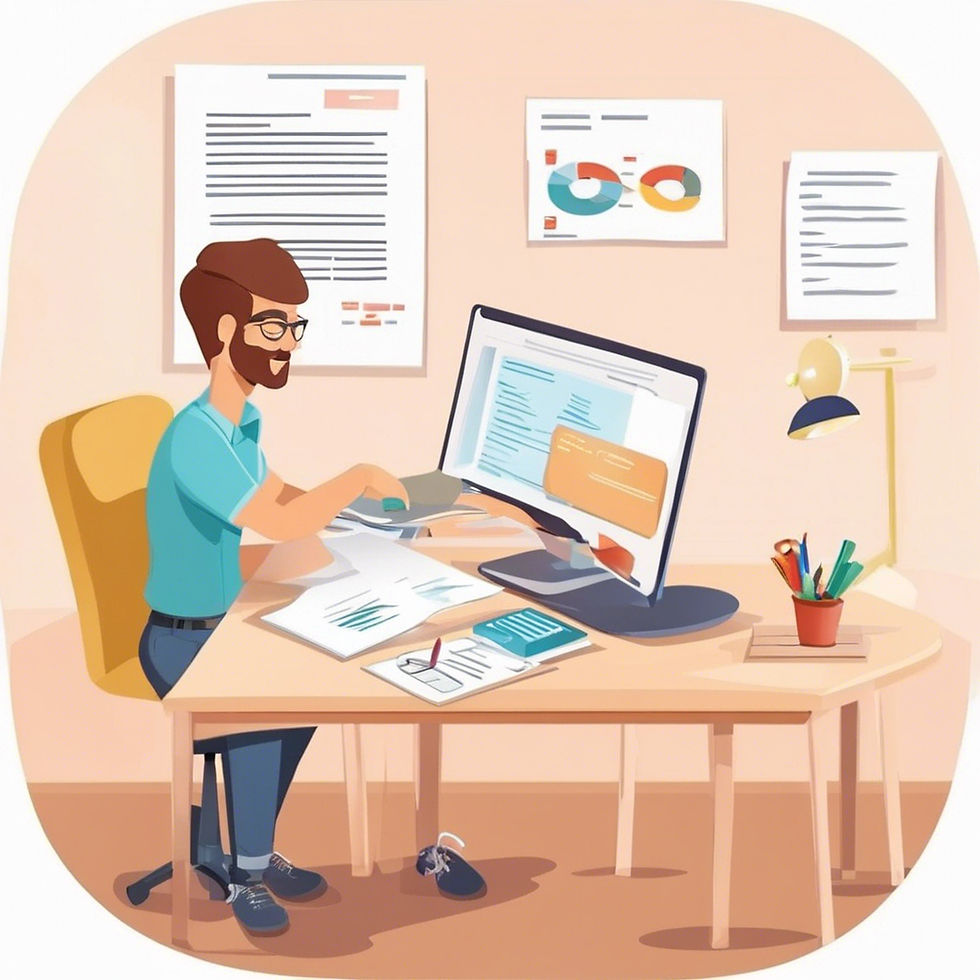How to Become a Software Tester with the Right Mindset
- Eshara Senadeera
- Aug 28, 2024
- 3 min read

Becoming a successful software tester goes beyond mastering testing tools and techniques; it involves cultivating the right mindset and fostering effective collaboration with various stakeholders in the software development lifecycle. Here’s a guide on how to develop a testing mindset and work harmoniously with developers, business analysts, and project managers, while also making tough decisions when necessary.
1. Embrace the Testing Mindset
1.1. Curiosity and Attention to Detail
As a software tester, your primary role is to ensure that software meets quality standards and performs as expected. This requires a keen eye for detail and a natural curiosity about how things work. Develop a habit of questioning and exploring every aspect of the application. Ask questions like:
How does this feature interact with others?
What happens if the user inputs unexpected data?
Are there edge cases that could break the functionality?
1.2. Analytical Thinking
Testing is not just about executing test cases but also about understanding the underlying logic and identifying potential issues that may not be immediately obvious. Cultivate analytical skills to assess how different components of the software interact, and anticipate how changes in one area might affect others.
1.3. Continuous Learning
The field of software testing is constantly evolving with new tools, technologies, and methodologies. Stay updated with the latest trends and best practices by attending workshops, participating in online forums, and pursuing certifications. This will not only enhance your skills but also demonstrate your commitment to your profession.
2. Collaborate Effectively
2.1. Work as a Team with Developers
A software tester’s job involves close collaboration with developers to ensure that issues are identified and resolved efficiently. Build strong relationships with developers by:
Communicating Clearly: When reporting bugs, provide clear and detailed information to help developers understand and reproduce the issue.
Being Supportive: Approach issues with a problem-solving attitude rather than placing blame. Offer suggestions and work together to find solutions.
2.2. Engage with Business Analysts
Business analysts play a crucial role in defining requirements and understanding user needs. Collaborate with them to:
Understand Requirements: Ensure you have a thorough understanding of the requirements and business logic behind the features you are testing.
Clarify Ambiguities: Work with business analysts to clarify any ambiguities in requirements or specifications to prevent misunderstandings and ensure accurate testing.
2.3. Coordinate with Project Managers
Project managers oversee the project’s overall progress and ensure it aligns with business goals. Engage with them to:
Discuss Priorities: Understand the priorities and timelines of different features to allocate your testing efforts effectively.
Provide Feedback: Share insights about the quality and stability of the software to help project managers make informed decisions about releases and deadlines.
3. Balance Team Collaboration with Tough Decisions
3.1. Make Informed Decisions
Sometimes, you may need to make tough decisions regarding the quality and release of the software. This involves:
Assessing Risks: Evaluate the severity and impact of identified issues. Determine whether a bug is critical enough to delay the release or if it can be deferred.
Communicating Risks: Clearly communicate the potential risks and impact of issues to stakeholders, ensuring they are aware of any potential consequences.
3.2. Stand Your Ground When Necessary
While collaboration is key, it’s also important to advocate for quality. If you believe that a software release is not meeting the necessary quality standards, you may need to:
Provide Evidence: Support your stance with concrete evidence and data from your testing.
Be Professional: Approach discussions with a focus on the quality and benefits of the software, rather than personal disagreements.
3.3. Learn from Experience
Every challenging decision and interaction provides an opportunity for growth. Reflect on your experiences and learn from them to improve your decision-making skills and enhance your ability to navigate complex situations in the future.
4. Conclusion
Becoming a successful software tester involves more than just technical expertise. It requires a mindset of curiosity, analytical thinking, and continuous learning. Effective collaboration with developers, business analysts, and project managers is crucial for ensuring that software meets high-quality standards. At the same time, be prepared to make tough decisions when necessary, balancing team dynamics with the need for quality. By embracing these principles, you’ll be well-equipped to thrive in the dynamic field of software testing.



Comments